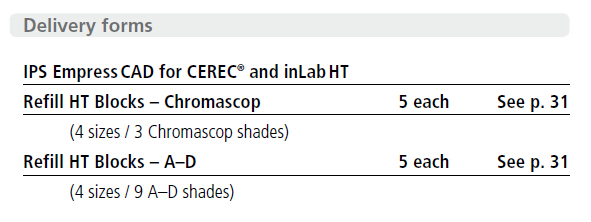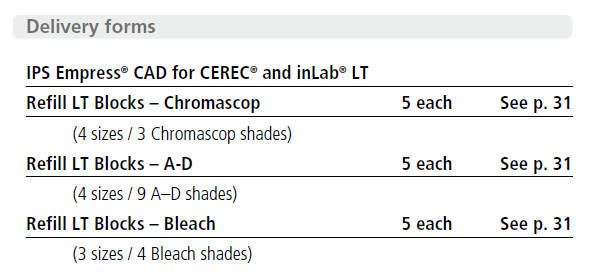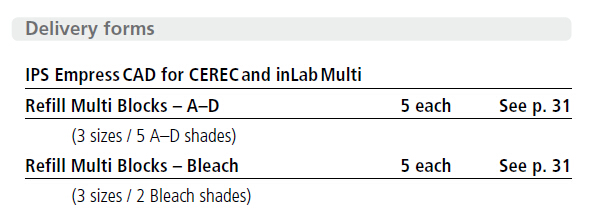|
|
IPS Empress CAD
IPS Empress CAD
|
|
IPS Empress ceramic material has been known and established for processing in the laboratory for 20 years. Since the introduction of IPS Empress CAD, esthetic restorations may also be fabricated in the dental office by means of CAD/CAM. Moreover, the IPS Empress family is supplemented by a composite for direct restorative therapy: IPS Empress Direct (see under Composites). IPS Empress CAD blocks are suitable for the fabrication of all-ceramic inlays, onlays, veneers, and crowns by means of CAD/CAM. They are available in two levels of translucency (high translucency and low translucency) as well as a polychromatic IPS Empress CAD Multi Block. IPS Empress® CAD HT The IPS Empress CAD HT blocks exhibit a higher translucency and lower brightness value than the LT blocks. They are ideally suitable for fabricating inlays and onlays because of their exceptional chameleon effect. The high translucency of the material and its lifelike fluorescence allow the restoration to blend in seamlessly with the surrounding dentition.
IPS Empress® CAD LT The IPS Empress CAD LT blocks are characterized by their high level of brightness and true-to-nature chroma. Therefore, they are particularly suitable for fabricating larger restorations.
IPS Empress® CAD Multi The polychromatic IPS Empress CAD Multi blocks offer a smooth colour transition between the dentin and incisal areas. They
|




